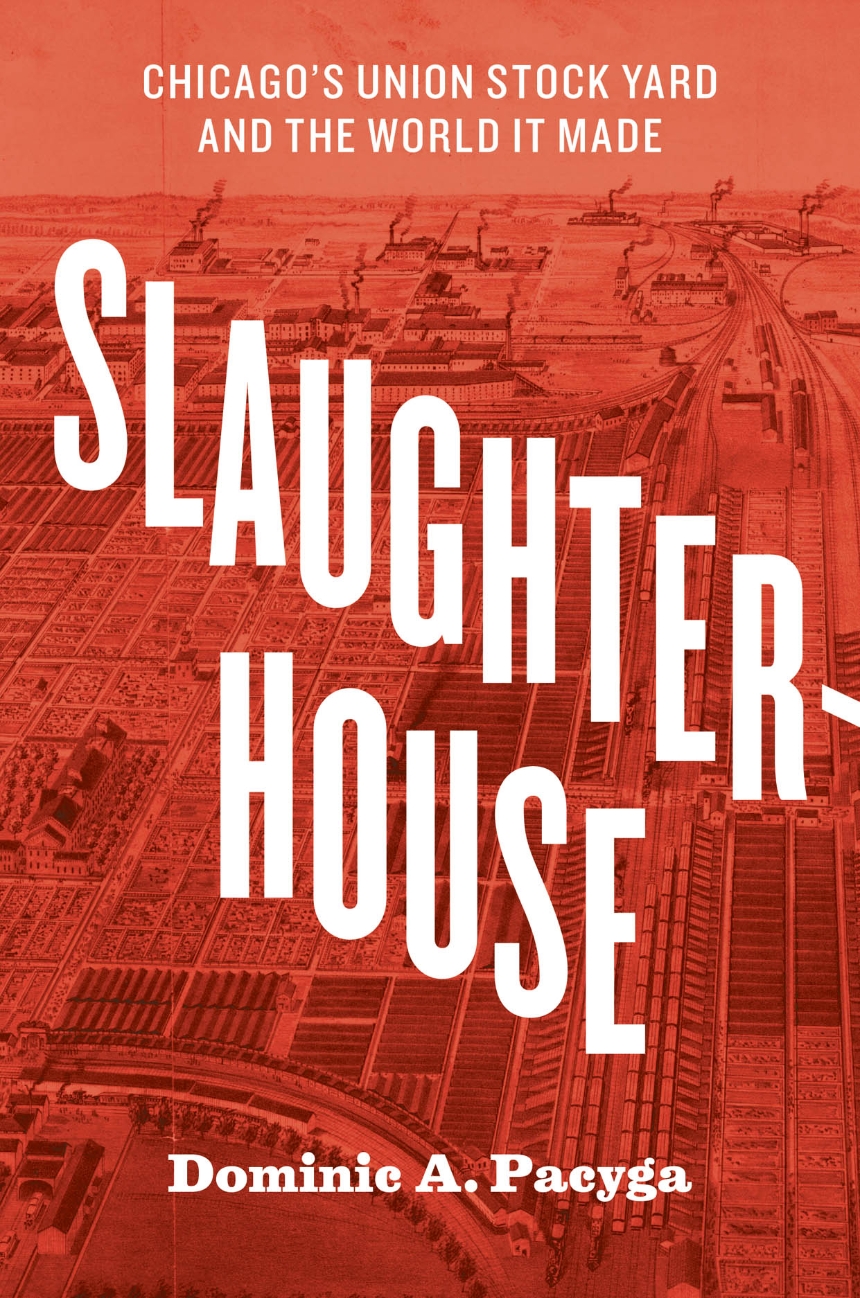Slaughterhouse
Chicago’s Union Stock Yard and the World It Made
9780226566030
9780226123097
9780226291437
Slaughterhouse
Chicago’s Union Stock Yard and the World It Made
From the minute it opened—on Christmas Day in 1865—it was Chicago’s must-see tourist attraction, drawing more than half a million visitors each year. Families, visiting dignitaries, even school groups all made trips to the South Side to tour the Union Stock Yard. There they got a firsthand look at the city’s industrial prowess as they witnessed cattle, hogs, and sheep disassembled with breathtaking efficiency. At their height, the kill floors employed 50,000 workers and processed six hundred animals an hour, an astonishing spectacle of industrialized death.
Slaughterhouse tells the story of the Union Stock Yard, chronicling the rise and fall of an industrial district that, for better or worse, served as the public face of Chicago for decades. Dominic A. Pacyga is a guide like no other—he grew up in the shadow of the stockyards, spent summers in their hog house and cattle yards, and maintains a long-standing connection with the working-class neighborhoods around them. Pacyga takes readers through the packinghouses as only an insider can, covering the rough and toxic life inside the plants and their lasting effects on the world outside. He shows how the yards shaped the surrounding neighborhoods and controlled the livelihoods of thousands of families. He looks at the Union Stock Yard’s political and economic power and its sometimes volatile role in the city’s race and labor relations. And he traces its decades of mechanized innovations, which introduced millions of consumers across the country to an industrialized food system.
Once the pride and signature stench of a city, the neighborhood is now home to Chicago’s most successful green agriculture companies. Slaughterhouse is the engrossing story of the creation and transformation of one of the most important—and deadliest—square miles in American history.
Slaughterhouse tells the story of the Union Stock Yard, chronicling the rise and fall of an industrial district that, for better or worse, served as the public face of Chicago for decades. Dominic A. Pacyga is a guide like no other—he grew up in the shadow of the stockyards, spent summers in their hog house and cattle yards, and maintains a long-standing connection with the working-class neighborhoods around them. Pacyga takes readers through the packinghouses as only an insider can, covering the rough and toxic life inside the plants and their lasting effects on the world outside. He shows how the yards shaped the surrounding neighborhoods and controlled the livelihoods of thousands of families. He looks at the Union Stock Yard’s political and economic power and its sometimes volatile role in the city’s race and labor relations. And he traces its decades of mechanized innovations, which introduced millions of consumers across the country to an industrialized food system.
Once the pride and signature stench of a city, the neighborhood is now home to Chicago’s most successful green agriculture companies. Slaughterhouse is the engrossing story of the creation and transformation of one of the most important—and deadliest—square miles in American history.
256 pages | 50 halftones | 6 x 9 | © 2015
Economics and Business: Business--Industry and Labor
History: American History, Urban History
Reviews
Table of Contents
Preface
Confronting the Modern in Chicago’s Square Mile
1 Spectacle
Facing the Modern World
2 Genesis
From Swamp to Industrial Giant
3 Working in the Yards
The Move to the Modern
4 “Success Comes to Those Who Hustle Wisely”
The Emergence of the Greatest Livestock Market in the World
5 Slaughterhouse Blues
The Decline and Fall of the Union Stock Yard
6 Innovate for Efficiency—Though with Less Stench
The Square Mile after the Union Stock Yard
Acknowledgments
Notes
Index
Confronting the Modern in Chicago’s Square Mile
1 Spectacle
Facing the Modern World
2 Genesis
From Swamp to Industrial Giant
3 Working in the Yards
The Move to the Modern
4 “Success Comes to Those Who Hustle Wisely”
The Emergence of the Greatest Livestock Market in the World
5 Slaughterhouse Blues
The Decline and Fall of the Union Stock Yard
6 Innovate for Efficiency—Though with Less Stench
The Square Mile after the Union Stock Yard
Acknowledgments
Notes
Index
Awards
Illinois State Historical Society: Russell P. Strange Memorial Book of the Year Award
Won
